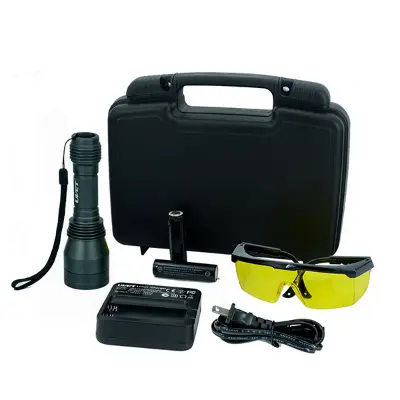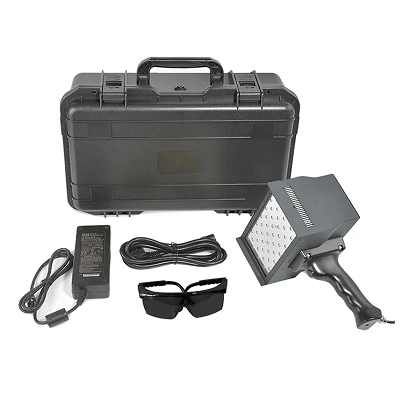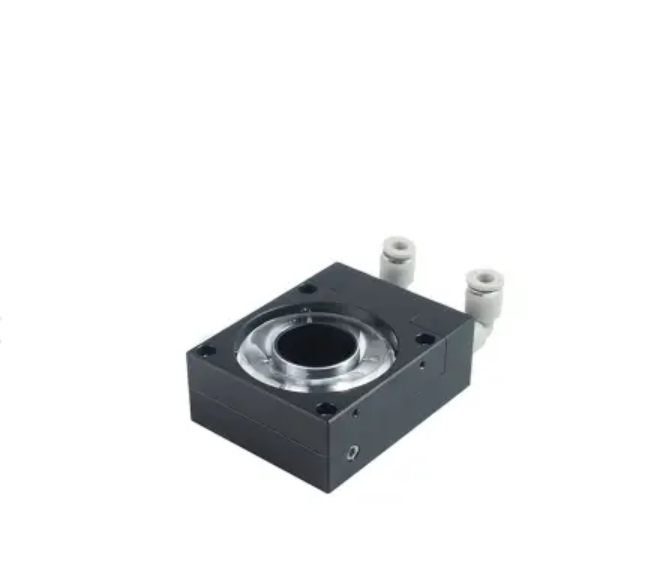What is Battery-Powered Curing?
Battery-powered curing is the term now used to refer to portable, cordless systems to cure adhesives, coatings, polymers, and resins with LED or UV light. They do not need a constant exportable power as would be the requirement of the conventional machines, thus making them appropriate where they are required at site, field repairs, and mobile inventions.
These curing systems are modern sources of high efficiency curing using UV LED, and also lightweight, compact systems. They are fast, consistent curing, energy efficient, and easily handled. These devices perform reliably when used in dental applications, 3D printing, and the assembly of electronics.
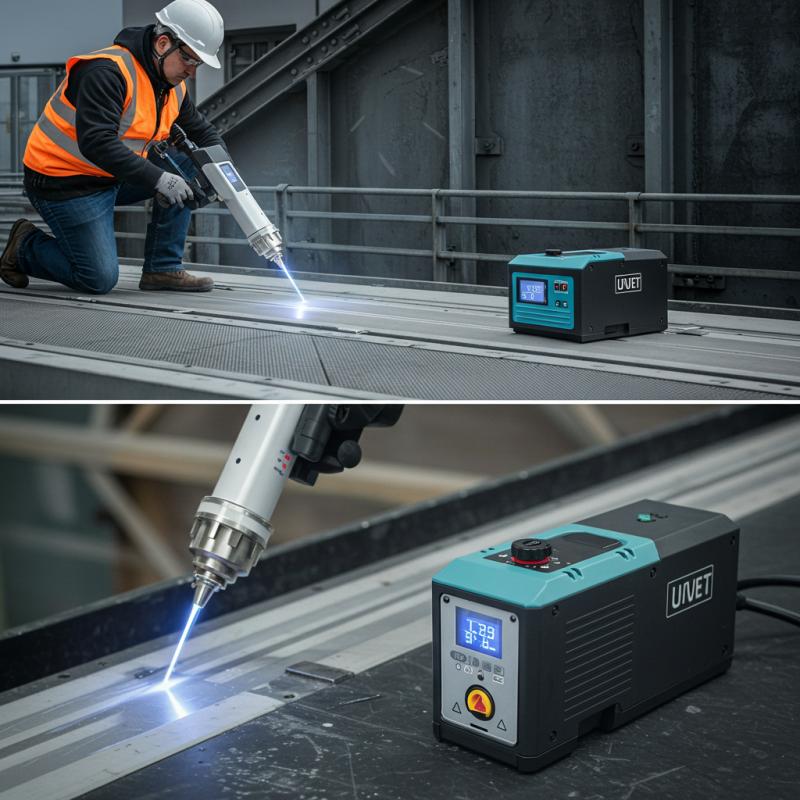
Key Benefits:
•Portability: Work (without cords or AC power) anywhere.
•Efficiency: fast with energy-efficient LEDs.
•Versatility: The product can be used on adhesives, coatings, polymers, and resins.
•Ease of use: Small, sleek, and easy to carry about.
The science behind Battery-powered curing.
The concept of battery-powered curing is important to fully make use of the curing method and get maximum life output. The steps can include the following most crucial ones:
- Light Emission: A compact diode array emits light of either UV or LED.
- Light penetration: Photo initiators are activated by light penetration through the adhesives, coatings, or resins.
- Curing Reaction: The material is solidified or hardened as a result of chemical reactions.
- Final Step: Full polymerization confers longevity, strength, and bonding.
Technical Advantages:
- Uniform coverage is provided by edge-lit or surface-emitting LEDs.
- Powerful battery systems will give hours of non-stop performance.
- In certain devices, micro-optical structures increase illumination.
- They are commonly used in battery-powered UV curing of adhesives, portable curing in electronic component assembly, and handheld curing to fix field repairs.
Classifications of Battery-Powered Curing Devices
1. Hand-Held UV LED Curing Equipment
These are portable, comfortably designed, and fit quick repairs easily. They apply battery-powered UV lights to cure tiny areas within a short time.
2. Portable Curing Units
Smaller in size, intended to be used on larger projects, these units are battery-powered curing systems that will cure wider areas, rather than just a small coating or a small section of resin.
3. LED Curing Systems, No Cord
Cordless LED curing systems are ideal in conditions when power is not easily accessible, as the devices are portable and of high-intensity light. This gives quick polymerization.
4. Tailor-made Battery-Powered Solutions
The 3D printing and medical industries are some of the best examples that need highly efficient portable curing systems that suit both materials and the environment.
Regarding Technical Specifications to be considered, the following points must be given attention:
The Uses of Battery-Powered Curing in Various Industries
- Medical devices and adhesive bonding
Battery-powered curing is changing the way adhesives bond in medical equipment and devices in the healthcare field. Quick curing times are needed on adhesives used to bond devices like surgical instruments, diagnostic kits, and implantable medical devices that only deep UV and UV LED can produce. This process is facilitated through cordless curing systems that help to remove power cords, which would disturb sterile processes. Doctors and technicians can also use them in the operating rooms, laboratories, and in mobile clinics, because of their portability. Accurate curing wavelengths (365 nm to 405 nm) make this safe and effective bond very strong with reliable bonding properties.
- Optical Lens assembly
Sensing optics. In the case of optics manufacturing, accuracy and clarity are necessary when bonding lenses. Battery-operated curing systems deliver even UV that will prevent the creation of bubbles, asymmetries, or micro adjustments in glues. These are bubble-free, germ-free, and inevitably clear curing whether using camera lenses, high-powered microscopes, or optical sensory equipment. Any flexibility to change spot size allows them to be used equally well in miniature lens systems and large optical systems. This enhances the speed of production and ensures uniform optical performance.
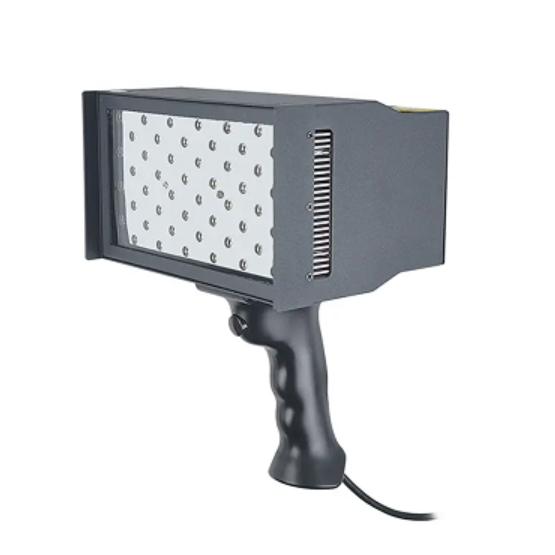
- Automobile Lighting Technology
There has been an emerging trend in the motor vehicle industry, whereby manufacturing firms are embracing battery-powered curing to bond the adhesives used in headlights, taillights, and interior light parts. UV curing also gives quick, non-heat curing of bonding, which is essential to the sensitive plastics and electronic parts. The fact that these cordless curing units are portable makes them helpful in field repairs and quality control as well. This helps in reducing downtimes and in the efficiency of work in assembly lines.
Correct Selection Criteria of Handheld LED UV Curing Unit
1. Select UV below Appropriate Materials
- Various resins and coatings, and adhesives also respond to UV wavelengths.
- 365nm, the shortest wavelength, works best on very thick coatings or UV adhesives.
- 385nm/395nm - Can be used on most general-purpose resins, inks, and coatings.
- 405nm: Good option for fast-curing on surfaces, applied in some 3D resin printing.
The technical data sheet (TDS) of a particular material should always be checked to ensure the necessary wavelength is known.
2. Intensity and Power Control
Light power and intensity are important to the curing efficiency.
- Low power (<5W) - small-scale applications, sensitive ones.
- High power (5W10W+) -Required when it comes to more dense materials and working with faster industrial cure.
Make sure that the devices have adjustable power levels and intensity so as to make them versatile to various materials and uses.
3. Spot Size and Uniformity Beam
Light spot size has some effect on curing accuracy and coverage.
- Small spot (~10mm) - Ideal with electronics, medical equipment, fine bonding applications.
- Bigger spots (20 - 50mm) - Ideal as coatings or bonding larger areas.
- Even beam distribution is important to cure under- or over-curing at the edges.
Conclusion
Battery-powered curing is changing the way the industries view adhesives, coatings, polymers, and resins. Handheld dental curing lamps, portable UV LED units to repair electronics or do field work: these products are mobile, energy-efficient, and precise. To see performance-oriented, state-of-the-art battery-powered cured equipment, go to UVET and find out about what technology adds portability, efficiency, and leading-edge LED UV technology to the field of manufacturing non-destructive testing products.
